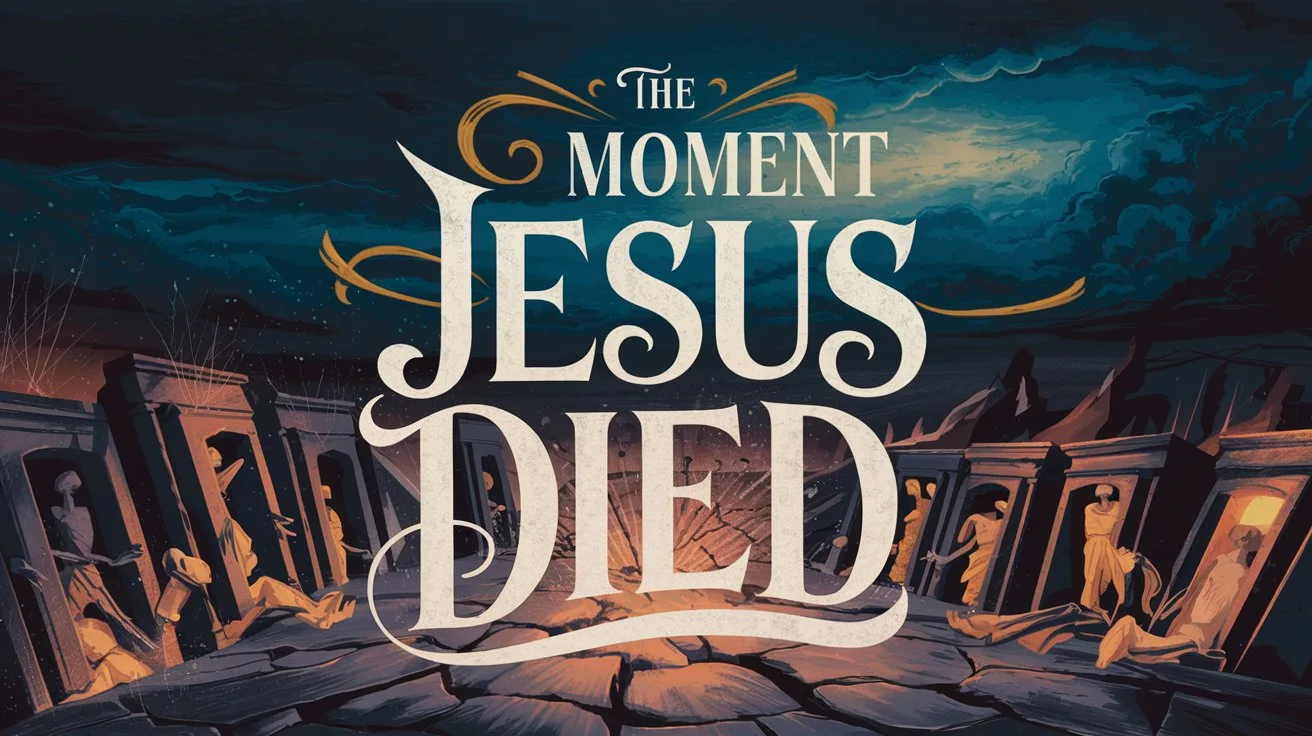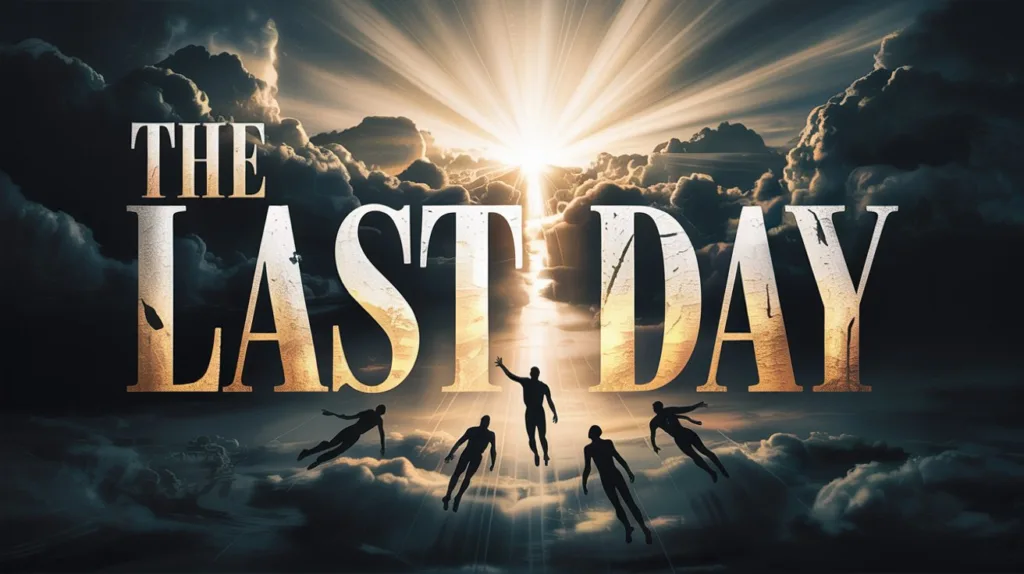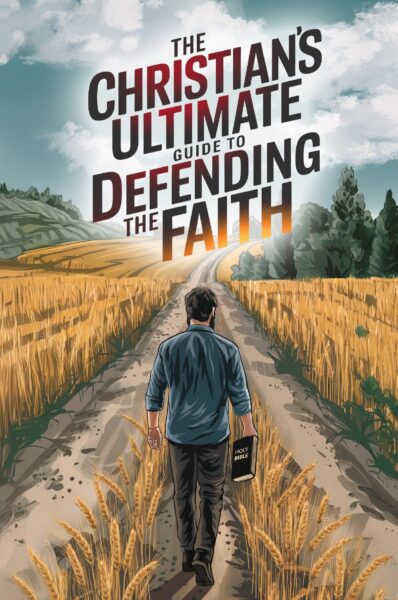The moment Jesus yielded His spirit on the cross was no ordinary death. The earth itself responded in terror, the heavens bore witness, the veil of the temple was violently torn, and even the graves of the dead were opened. This was the turning point of all history: the Light of the World had descended into the grave, and all creation trembled.
The Darkness That Covered the Earth
From noon until Jesus’ final breath, an unnatural darkness fell upon the land.
“Now from the sixth hour until the ninth hour there was darkness over all the land.” (Matthew 27:45)
This was no eclipse, no passing shadow of clouds, but a supernatural sign of the weight of death upon the Light of the World. Jesus, the spotless Lamb, was giving Himself willingly as a propitiation for our sins. He was not abandoned by the Father, for He and the Father are one (John 10:30). Instead, He was fulfilling prophecy, stepping fully into the agony of death itself so that we might have life.
In His suffering, He cried out:
“My God, My God, why have You forsaken Me?
Why are You so far from helping Me,
And from the words of My groaning?” (Psalm 22:1)
This was not a cry of despair but a declaration of prophecy. He was quoting the opening line of Psalm 22, a messianic psalm that vividly describes the crucifixion. Far from being abandoned, Jesus was pointing the people to the scriptures that foretold this moment. He was enduring the full reality of human death, yet He remained in perfect unity with the Father, offering Himself willingly.
As the world darkened, creation itself mourned. The Light of the World (John 8:12) had entered into the grave. This darkness was a sign of the immense spiritual significance of this moment: He was taking the place of sinful man, not in punishment, but as the innocent, spotless sacrifice given for the redemption of the world.
Secular historians even recorded this event. The Greek historian Thallus, writing around 52 A.D., mentioned a strange darkness that covered the earth during this time, though he tried to dismiss it as an eclipse. Julius Africanus, an early Christian writer, refuted this by noting that an eclipse was impossible during a full moon, which always occurred during Passover. The Roman historian Phlegon also wrote of an unusual darkness and an earthquake in the same period.
This darkness was a symbol of a divine moment. Just as Egypt was cast into darkness before the death of the firstborn (Exodus 10:21-23), so now the world was darkened as God’s own Son was given over to death.
The Moment Jesus Gave Up His Spirit
Jesus did not die as other men do. His life was not taken from Him; He willingly gave it up.
“And Jesus cried out again with a loud voice, and yielded up His spirit.” (Matthew 27:50)
John records His final words:
“So when Jesus had received the sour wine, He said, ‘It is finished!’ And bowing His head, He gave up His spirit.” (John 19:30)
The phrase “It is finished” (Tetelestai) was a declaration of victory. The debt of sin had been paid in full. The great work of redemption was complete.
The Veil of the Temple Was Torn in Two
At that very moment, the veil in the temple was torn—from top to bottom.
“Then, behold, the veil of the temple was torn in two from top to bottom; and the earth quaked, and the rocks were split.” (Matthew 27:51)
This was no ordinary curtain. The veil that separated the Holy of Holies from the rest of the temple was a massive, heavy tapestry. According to Jewish tradition, the veil was about 60 feet high, 30 feet wide, and at least 4 inches thick (woven so tightly that it was said that even horses pulling in opposite directions could not tear it apart).
The Holy of Holies was where the presence of God dwelt, and only the High Priest could enter, and only once a year on the Day of Atonement (Leviticus 16:2). The tearing of the veil signified that the way to God was now open: not through the blood of animals, not through the work of a High Priest, but through Jesus Christ.
The book of Hebrews explains:
“Therefore, brethren, having boldness to enter the Holiest by the blood of Jesus, by a new and living way which He consecrated for us, through the veil, that is, His flesh, and having a High Priest over the house of God, let us draw near with a true heart in full assurance of faith.” (Hebrews 10:19-22)
The temple, once the center of worship, was now rendered obsolete. Christ had fulfilled the sacrificial system: no more priests, no more altars, no more separation from God. The torn veil was an unmistakable sign that salvation was complete.
The Earthquake That Shook the Land
At the same moment, a great earthquake shook Jerusalem.
“And the earth quaked, and the rocks were split.” (Matthew 27:51)
This was no small tremor. The force was so strong that rocks split apart. The very foundations of the earth seemed to shudder at the death of its Creator. The prophet Nahum had declared long before:
“The mountains quake before Him,
The hills melt,
And the earth heaves at His presence,
Yes, the world and all who dwell in it.” (Nahum 1:5)
This was a divine sign of judgment and power, a foreshadowing of the final judgment when all creation will tremble before the returning King.
The Dead Rose from Their Graves
One of the most overlooked details of Jesus’ death is the resurrection of the saints.
“And the graves were opened; and many bodies of the saints who had fallen asleep were raised; and coming out of the graves after His resurrection, they went into the holy city and appeared to many.” (Matthew 27:52-53)
This event is remarkable. The death of Jesus not only tore the veil and shook the earth, but it also broke the power of death itself. The moment Christ surrendered His spirit, the graves of certain believers were opened. After His resurrection, they came out of their tombs and were seen in Jerusalem.
This was a preview of the final resurrection, the first fruits of what Jesus had come to accomplish. The prophet Isaiah had foretold this:
“Your dead shall live;
Together with my dead body they shall arise.
Awake and sing, you who dwell in dust;
For your dew is like the dew of herbs,
And the earth shall cast out the dead.” (Isaiah 26:19)
Those who had died in faith were now walking among the living, testifying to the power of Jesus’ victory over death. This was a foreshadowing of what will happen when Christ returns:
“For the Lord Himself will descend from heaven with a shout, with the voice of an archangel, and with the trumpet of God. And the dead in Christ will rise first.” (1 Thessalonians 4:16)
The Centurion’s Confession
All of these events led even the hardened Roman soldiers to confess the truth.
“So when the centurion and those with him, who were guarding Jesus, saw the earthquake and the things that had happened, they feared greatly, saying, ‘Truly this was the Son of God!’” (Matthew 27:54)
This man had likely witnessed countless crucifixions, yet this one was different. The darkness, the earthquake, the torn veil, the rising dead (he could no longer deny it), Jesus was the Son of God.
My Final Thoughts
The moment Jesus died, the entire world felt it. The darkness signified divine judgment, the earthquake shook creation itself, the veil was torn to open the way to God, and even the dead testified to His power. This was not the end of Jesus; it was the beginning of His ultimate victory.
This moment proves that only Jesus has the power to conquer sin and death. No man, no priest, no system of religion could ever do what Christ accomplished on the cross. The veil was torn, the price was paid, and the grave could no longer hold Him.
This is why we worship Him: because He alone is our salvation.





 Get the book that teaches you how to evangelize and disarm doctrines from every single major cult group today.
Get the book that teaches you how to evangelize and disarm doctrines from every single major cult group today.